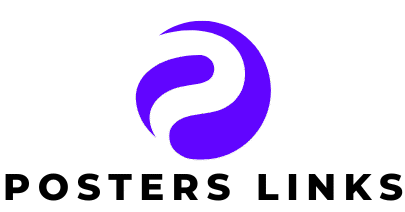The software industry is continuously evolving, with new technologies and innovations transforming the way businesses, organizations, and individuals interact with digital tools. From cloud computing to AI-driven applications, software is becoming increasingly integral to our personal and professional lives. As we look ahead to 2025, several key trends and developments are expected to reshape the software landscape, creating new opportunities and challenges for developers, users, and businesses alike.
In this article, we will explore the software trends that are likely to dominate the market in 2025. From the rise of low-code/no-code platforms to the increasing importance of cybersecurity, we’ll examine how these trends are transforming industries and providing a glimpse into the future of software.
1. The Shift to Cloud-Native Software: Revolutionizing the Way We Build and Deploy Applications
Cloud computing has already made a massive impact on the software industry, and by 2025, it’s expected to be the primary platform for developing and deploying applications. Cloud-native software, which is designed to run in the cloud environment, is becoming increasingly popular due to its scalability, flexibility, and cost-effectiveness.
Microservices Architecture: Modular and Scalable
One of the main features of cloud-native applications is their use of microservices architecture. Instead of building monolithic applications that can be difficult to scale and maintain, cloud-native applications are broken down into smaller, independent services that can be deployed and scaled individually. This modular approach allows for greater flexibility and faster development cycles.
Microservices are also enabling DevOps practices, where development and operations teams work closely together to deliver continuous integration and continuous deployment (CI/CD). This approach improves collaboration and speeds up the release of new features and updates.
Containerization and Kubernetes
Containerization is another key aspect of cloud-native software. Containers, such as Docker, allow developers to package applications and their dependencies into a single, portable unit that can run anywhere, whether on a developer’s laptop or in a cloud environment. Containers are lightweight and fast, making them ideal for building scalable applications in the cloud.
In 2025, Kubernetes, the open-source container orchestration platform, will continue to dominate in managing and automating the deployment of containerized applications. Kubernetes simplifies the management of large-scale, distributed applications, making it easier to deploy, scale, and monitor cloud-native services.
2. Low-Code and No-Code Development: Empowering Citizen Developers
As the demand for software solutions grows, there is a significant push to democratize development. Low-code and no-code platforms are revolutionizing the way applications are built, enabling individuals without extensive programming knowledge to create software solutions.
What is Low-Code/No-Code Development?
Low-code platforms allow users to build applications with minimal hand-coding by using visual interfaces, drag-and-drop components, and pre-built templates. No-code platforms, on the other hand, eliminate the need for coding altogether, providing non-technical users with the tools to create applications by simply configuring settings and selecting options.
In 2025, low-code and no-code platforms are expected to become even more advanced, offering greater functionality and customization. These platforms are already used in a variety of industries, from creating business automation tools to developing mobile apps. For example, companies can use these platforms to quickly prototype and deploy custom solutions without relying on large development teams.
Accelerating Innovation and Reducing Development Costs
Low-code and no-code platforms significantly reduce the time and cost of developing applications. By empowering business users to create their own tools, organizations can free up IT teams to focus on more complex projects. These platforms are particularly useful for small businesses and startups that lack the resources for traditional software development.
As these platforms mature, we can expect even greater integration with existing enterprise software, allowing organizations to build sophisticated applications that can interact with legacy systems and databases.
3. Artificial Intelligence: Driving Smarter Software Solutions
AI continues to be one of the most transformative forces in the software industry. As machine learning models become more advanced and accessible, developers are finding new ways to incorporate AI into their applications, making them smarter and more efficient.
AI-Driven Software: From Automation to Personalization
By 2025, we will see even more AI-driven applications, from customer service chatbots and virtual assistants to advanced data analytics tools. AI is already being used to automate routine tasks, such as data entry and customer inquiries, allowing businesses to streamline operations and reduce costs. AI-powered tools are also enabling predictive analytics, helping businesses make data-driven decisions based on historical trends and real-time information.
In addition to automation, AI is enhancing personalization. For example, AI-powered recommendation engines, such as those used by Netflix and Amazon, analyze user behavior and preferences to offer tailored content or product suggestions. In the future, AI will become even more personalized, with applications learning and adapting to individual users’ preferences and needs in real-time.
AI in Software Development: Enhancing Productivity
AI is also making its mark in the software development process itself. Machine learning models are being used to assist developers by automating repetitive tasks, such as debugging and code reviews. AI-powered development tools can also predict potential errors in code, suggest improvements, and even generate code snippets, improving overall productivity.
As AI technologies continue to improve, we can expect software development to become faster and more efficient, with fewer human interventions needed for routine tasks.
4. Cybersecurity: A Growing Concern in a Digital-First World
As the world becomes more reliant on software and digital technologies, cybersecurity will continue to be a major concern. In 2025, we can expect to see an increased focus on protecting sensitive data, preventing cyberattacks, and ensuring privacy in an increasingly interconnected world.
Rising Cybersecurity Threats
With the growing adoption of cloud-based services and the proliferation of connected devices, cybercriminals are finding new ways to exploit vulnerabilities in software systems. In particular, ransomware attacks, which encrypt a victim’s data and demand payment for its release, are becoming more sophisticated and widespread. Additionally, as more organizations adopt remote work models, securing endpoints such as laptops, smartphones, and tablets will be even more critical.
Zero Trust Architecture and Privacy-First Software
In response to these rising threats, Zero Trust Architecture (ZTA) is gaining traction as a security model for the digital age. ZTA assumes that every request, whether it originates from inside or outside the organization’s network, is a potential threat. This approach ensures that access to resources is tightly controlled, even for employees who are already within the network.
Privacy-first software is also becoming a priority for both businesses and consumers. In an era where personal data is often the most valuable asset, software companies are investing in stronger privacy features and transparent data usage policies. As regulations like the General Data Protection Regulation (GDPR) become more common, companies are being forced to rethink how they handle user data, and cybersecurity will remain a focal point for developers.
5. The Internet of Things (IoT): Connecting the World
The Internet of Things (IoT) is another trend that is reshaping software development. IoT refers to the network of physical devices—such as smart thermostats, wearable fitness trackers, and connected appliances—that communicate with each other over the internet. By 2025, IoT will become even more pervasive, with billions of connected devices generating vast amounts of data.
IoT Software: Managing the Connected Ecosystem
As the number of IoT devices grows, the need for software that can manage, monitor, and secure these devices will increase. IoT platforms are being developed to provide centralized control over connected devices, allowing businesses and consumers to monitor everything from energy usage to security systems in real-time. Software solutions will need to be designed to handle the complexity of IoT networks, ensuring smooth communication between devices and robust data protection.
Data Analytics and Automation
The data generated by IoT devices holds immense potential for businesses. By collecting and analyzing this data, companies can gain valuable insights into user behavior, optimize operations, and create personalized experiences. In 2025, we expect to see even more advanced software tools for analyzing IoT data, as well as more automation, allowing businesses to take action based on real-time data without human intervention.
Conclusion: The Future of Software in 2025
The software industry in 2025 is poised for exciting advancements, with trends like cloud-native applications, AI-driven innovation, and the rise of low-code/no-code platforms taking center stage. As businesses adapt to these changes, they must also prioritize cybersecurity, user experience, and data privacy. The software landscape is evolving rapidly, and those who stay ahead of these trends will be best positioned to thrive in a digital-first world.
Whether you’re a developer, a business owner, or a consumer, understanding these trends and preparing for the future will be key to navigating the increasingly complex and dynamic software environment.

